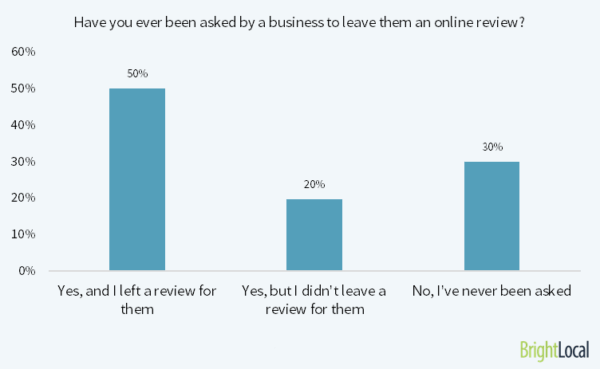However, if you've worked with customers — whether it be in a marketing, sales, or customer service role — you know there are universal characteristics that every customer possesses. These are fundamental traits that nearly all customers demonstrate whenever they're working with on a service-related issue. Understanding them, and how they influence customer behavior will help your team navigate roadblocks that extend beyond your product and generate positive brand experiences.
In this post, we'll break down a list of common customer characters that your employees should be prepared for when working on a customer service problem.
Customer Characteristics
- Informed About Your Company, Industry, & Events
- Eager for Solutions
- Social With Other Customers
- Connected to Various Devices & Channels
- Opinionated & Vocal
- Willing to be Self-Sufficient
- Critical of Competitive Customer Experiences
- Expecting Businesses to be Proactive
1. Informed About Your Company, Industry, & Events
Consumers share information at a rapid pace. If you have a question about a business, you can Google it and have an answer in seconds. From customer reviews to news coverage, press releases, and social media, there aren't many places for your business to hide on the internet.
This graphic shows how many review sites a customer will visit before they make a decision to buy from your business.
When supporting customers, it's important to keep in mind that your working with people who are informed about your company. They know your brand reputation and who you're competing with. This sets their expectations for how they desire to be treated and what your company should offer.
2. Eager for Solutions
When customers reach out to your support team, they're — at minimum — looking for a solution to their problem. It doesn't matter how cheery your rep sounds over the phone; if they can't solve the customer's dilemma, it's going to create friction within the service experience.
The best customer service teams find solutions to problems, no matter how difficult they may be. Even if it's a workaround, it's better to leave the customer with something rather then nothing at all. Once the call is over, reps can report these cases to product teams so developers can create an in-house solution.
During my time on the HubSpot Customer Support Team, it was regular practice to reach out to customers once our development team had updated the product. I would reopen closed support cases and let customers know that the problem we could not initially solve now had a designed solution. This type of above-and-beyond customer service always resulted in positive customer feedback and would often revert negative customer satisfaction (CSAT) scores.
3. Social With Other Customers
Customers are naturally social creatures and modern technology has enabled them to connect with more people and create digital communities. Social media is a perfect example. Aside from having "social" in the name, these platforms allow customers to share opinions with a large audience, join groups to discuss topics, and message individuals to have 1:1 conversations.
This trend is likely to continue and customers will leverage it as a way to learn more about companies. In fact, 70% of customers trust an online recommendation more than a brand's messaging. That's why it's important to invest in an omni-channel experience where customers can engage with your company through the same social platforms they use on a daily basis.
4. Connected to Various Devices & Channels
It's easy to simplify how people use the internet. Millennials use Instagram and Twitter, Gen X has taken to Facebook, and Gen Z dominates Tik Tok.
But, the internet is used for more than just cute dog videos and pictures of extravagant vacations. Customers aren't tied to one specific channel and many use smart devices in different ways.
And, these trends are changing at a rapid pace. For example, one study shows that Gen Z consumers are actually moving away from popular social media channels. The graphic below outlines some of the reasons why.
Because people are now constantly connected to smart devices and social channels, trends rise and fall faster. Certain audiences will commit to specific apps and platforms while other segments will move on to the next popular channel. It's important to stay on top of these changes if you want to reach customers where they're most comfortable.
5. Opinionated & Vocal
Customers are willing to offer feedback because many enjoy sharing their opinions about an interaction with a brand. Especially when their experience is significantly positive or negative. In fact, 95% of customers will share negative experiences and 89% will share positive ones.
However, the roadblock isn't getting customers to share their experience with others. It's getting them to share it publicly. As the graph below shows, 50% of customers won't leave an online review for your business.
But, here's the silver lining. Only 20% of customers refused to provide a review when asked. This means the more you ask customers to participate in surveys and questionnaires, the more reviews you'll receive.
6. Willing to be Self-Sufficient
Time is a fundamental customer need. Every customer wants their problem solved as quickly as possible, without cutting corners. And, what's better than waiting for your support team to help?
Getting an answer on your own.
67% of customers prefer self-service over working with a support representative. Using knowledge bases and community forums, customers want to troubleshoot problems independently and find answers on their time. They don't want to reach out to your customer service team and wait on hold for 15 minutes when they have a simple or quick question. They'd rather reserve your agents for complex or time-sensitive issues that can't be handled on their own.
7. Constantly Critical of Competitive Customer Experiences
Customers have options when it comes to picking a company to buy from or work with. This motivates people to research companies thoroughly and shop in a way that prioritizes their best interests.
And, depending on the industry you're a part of, this process repeats indefinitely. If your competitor's offer is clearly better than your current one, customers won't hesitate to move away from your business. While you may think you've earned a customer's loyalty, remember that 51% of them will churn after one poor experience.
8. Expecting Businesses to be Proactive
Customer service has long been thought of as an indirect customer acquisition tool. Having top-of-the-line customer service is a key bargaining chip that many businesses leverage over their competition.
But now, customers have been let in on the secret and understand that companies are actively working to win over their business through customer service. This has raised expectations for how brands should treat their customers. In fact, 54% of customers admitted that their expectations for customer service are higher than they were a year ago.
So, how do brands meet and exceed their new expectations?
Many are starting with proactive customer service.
Customer Segmentation
.png?width=112&height=112&name=Image%20Hackathon%20%E2%80%93%20Vertical%20(57).png)


![Customer Profiling in 10 Easy Steps [+ Templates]](https://53.fs1.hubspotusercontent-na1.net/hubfs/53/customer-profiling_2.webp)

![How to Get B2B Customer Segmentation Right [+Tips]](https://53.fs1.hubspotusercontent-na1.net/hubfs/53/b2b-customer-segmentation-1-20250109-7176487.webp)





![8 Companies Mastering Customer Segmentation [+ Examples]](https://53.fs1.hubspotusercontent-na1.net/hubfs/53/customer-segmentation-examples_6.webp)
